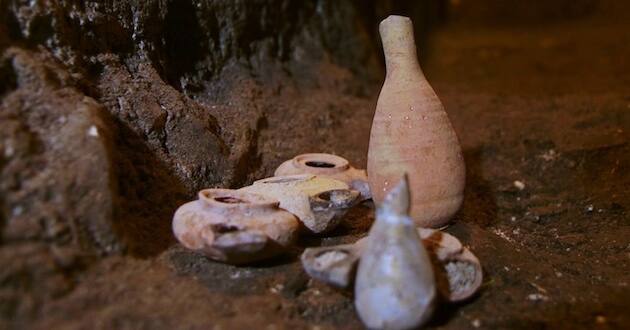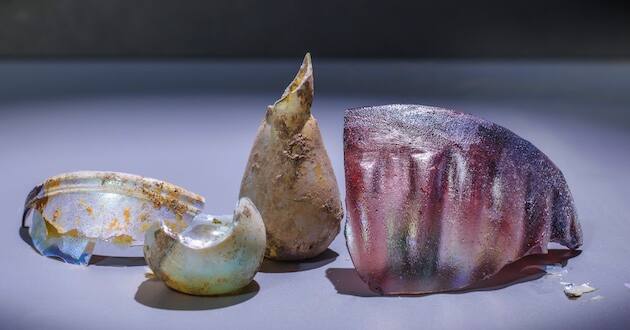An archaeological excavation in Jerusalem has uncovered 2,000-year-old trash and relics from the decades surrounding the life of Christ.
The findings include items used daily by Jerusalem’s citizens, including dishes and glass vials alongside grape seeds, kernels of grain, fish bones and eggshells. According to officials, it reveals the city’s vibrant and changing pulse in the years before the occupying Roman army destroyed the Second Temple and changed the name of Israel to Palestina. One of the finds includes a complete Roman sword inside its intact leather scabbard connecting the city to the Roman occupation.
The items were found in a channel that through the city.
“Into the channel’s mouth were swept the detritus of the life above Jerusalem’s main street, where they remained preserved between the walls just as they were at the moment of the city’s destruction,” said Ayala Zilberstein, excavation director for the Israel Antiquities Authority. “Small finds tell us a big story, from Jerusalem’s heyday of prosperity and splendor, when its streets bustled with life, until the city’s ebbing moments during the rebellion against the Romans and its total abandonment following the temple and city’s destruction.”
In the soil’s upper layers, archaeologists found remains from the time of Jerusalem’s destruction, including complete pottery lamps dated to the end of the Second Temple period. That period in Jerusalem’s history spanned approximately 600 years, from the time of the construction of the Second Temple to its destruction in the year 70. Soot on the lamps’ rims “remains as a sign of the fire that once burned inside them,” a news release said.
Tour Israel with us in 2025! Details HERE.
As the archaeologists dug deeper, they found items from decades before 70 A.D. when Jerusalem was humming with “never-ending activity.” Among the items: vials of perfume and expensive oils, and a “delicate glass vial that was miraculously preserved almost without any damage.”
“Through this large variety of pots and dishes that accumulated in the drainage channel, we encounter nearly the complete tableware set of Jerusalem’s residents,” Zilberstein said. “In contrast to the limited set of vessels generally found when excavating a single household kitchen, the channel assemblage is drawn from many houses and from different streets in town, thus presenting us with examples of almost all wares the city’s merchants had to offer.”
READ: Israel moves to protect Dead Sea Scrolls ahead of expected Iranian attack
According to the Antiquities Authorities, in addition to coins and colorful beads, “the main contribution of the Sifting Project’s filtration work came from an unexpected direction, with the discoveries of food remains that helped researchers discover some of the secrets of the ancient Jewish kitchen: grape pips (seeds), kernels of grains, fish bones and even eggshells; all of which shed light on the menu of the Jerusalem’s residents when the city’s life was vibrant. The richness of the organic finds prompted a battery of diverse laboratory tests to detect remains not visible to the naked eye.”
The rebellion against Rome and the destruction of the Temple by its military also came with the death of about one million Jews.
“Out of approximately four to five million Jews in the world [Roman world], over a million died in that abortive war for independence. Many died of starvation, others by fire and crucifixion. So many Jews were sold into slavery and given over to the gladiatorial arenas and circuses that the price of slaves dropped precipitously, fulfilling the ancient curse: “There you will be offered for sale as slaves, and there will be no one willing to buy” (Deuteronomy 28:68). The destruction was preceded by events so devastating that they read like scenes out of the Holocaust,” According to My Jewish Learning.
For the city, it would have been a quick and thorough annihilation and that may be on the minds of Jerusalem residents today as Iran threatens it with a nuclear Holocaust.
Eli Escusido, the Authority’s director, says today the word “destruction” takes on more relevance, “to remember where we came from and what we went through, to connect with our history, and thus gain a broader view of our life here in Israel.”
–Dwight Widaman | Metro Voice










